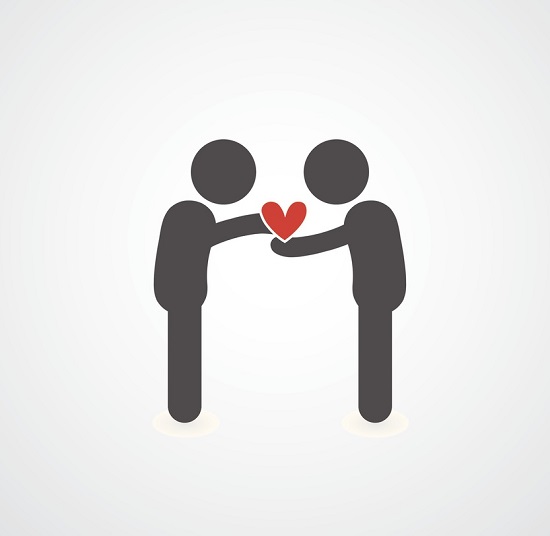Given that humans and their brains have derived at least 7,000 languages to attempt to express what those brains experience, my next 1,000 words or so don’t stand a chance of conveying the complexity of one individual’s brain, much less the brains of humanity at large. However, when an individual comes to me and says, “Help me,” I need to be able to take action, right now, based on the best distillation of the best available information I can.
I have been a ruthless, relentless, even desperate student of the research on addiction treatment for 4 years and 8 months. While I appreciate that writers like Marc Lewis and Carl Hart even engage in neuroscience research themselves to buttress their theories – and data begins as theories – in my view, currently only journalist Maia Szalavitz cites data for every assertion she makes. I have studied her latest book, her current writing, her former writing, and the research studies she cites.
In my rural area, addiction threatens premature death. I don’t have time for theories, opinions, “practice wisdom,” legacy “treatments,” or beliefs. I need to know what science says helps people with addiction and offer it right here, right now.
When I heard this podcast interview with Maia Szalavitz by Scott Barry Kaufman, released on 9/6/17, pieces fit together in a new way.
Here’s an attempt to write a brief, layperson’s version of the latest science on addiction and its treatment.
Addiction is defined as compulsive persistence despite negative consequences. Compulsively persisting is quite human and a strength when it comes to discovering a squalling infant’s needs and meeting them, talking with an upset teenager, cleaning up after a hurricane, or at any time when the going gets tough. Persistently engaging in the same behavior over and over again is a strength when one is learning to play the violin or to shoot a basketball.
The majority of people use any and all substances without negative consequences, i.e. without becoming addicted to them. That includes pain pills, cocaine, methamphetamine and heroin.
In people who may have any of this list of conditions or some combination of them – past trauma, mental illness, a state of despair, from existential to financial, inadequate social connection, or “social capital,” neuroatypical wiring, and youth – for reasons neuroscientists are beginning to fathom but cannot quite pinpoint, use of a substance can be experienced as what can be termed “love.” The reassurance, comfort and connection that love brings is provided by the substance.
Returning to use of a substance that offers this eased state makes sense, and could even be termed a “moral” action when it relieves suffering. For people with predisposing conditions, something in the brain’s neurocircuitry causes the brain to learn, to the point of over-learning, to persist despite negative consequences. But the person persists in that love for a substance, rather than in this love – for the self, for a person, for a community, beloved work, or with a beloved activity. Essentially, it’s “love gone awry.” Because substances are hard on the brain and impair cognitive functioning, dysfunctional behavior happens, negative consequences happen, but the use and the behavior persist.
Treatment for addiction therefore (this is where my eyes stung with tears of shock, sorrow and recognition when I heard Maia say this in her interview) begins with embracing addiction as an understandable, deeply human development. Splitting addiction off from the self denies the reality of the wholeness of the person’s inner system and causes psychological damage. Compassionately acknowledging and embracing what went down for the self to have gotten to this difficult place is where healing begins. Thus, the addiction-love-learning development is less a form of brain damage or a brain disease, but more what might be termed a brain over-development.
Healing would require a love-learning shift to happen from the problematic substance to something love-worthily meaningful to the individual. Evidence abounds with a bounty of methods that can assist with this shift. And treatment as usual, primarily involving confrontation and reprimand – “tough love vs. LOVE love,” is contraindicated. As Maia Szalavitz writes here, “To return our brains to normal then, we need more love, not more pain.”
For overuse of some substances, and for some individuals, medication may be useful or needed, perhaps lifelong. Because overuse of some substances can harm the brain, abstinence from problematic substances and/or harm reduction may be helpful. For some individuals, absolute abstinence may be in order. For others, some use at some times may be functional. (These decisions would be made by individuals and their medical care providers.) For substance addictions, how much of what can be used and under what circumstances for one individual cannot be generalized to all people.
For people with substance use disorders, then, straightforward goals would be to: 1) not persist in using a substance despite negative consequences, and 2) create healthy, functional, loving lives for themselves.
Extrapolating from there, the fundamental measurement criterion for successful treatment, given the definition of addiction, is reduction in harmful consequences to self and others. Not number of days abstinent.
Combining psychologist Alan Marlatt’s caution, “Do not attempt to take away a person’s main means of trying to cope with pain and suffering until you have another effective coping strategy in place,” with Maia Szalavitz’s conclusion, “The ability to persevere is an asset: People with addiction just need to learn to redirect it,” the ideal treatment for people with addiction would balance tapering out substances with tapering in what uniquely helps individuals feel engaged, connected, bonded, and functional.
When given a choice between substances and love, rats and voles choose love.
We don’t have addiction treatment protocols that help people love and feel loved. But the neuroscience of love and addiction reports that our treatment protocols would be evidence-based if we did.
The opinions expressed are mine alone and do not necessarily reflect the positions of my employers, co-workers, clients, family members or friends. This content is for informational purposes only and is not a substitute for medical or professional advice. Consult a qualified health care professional for personalized medical and professional advice.

